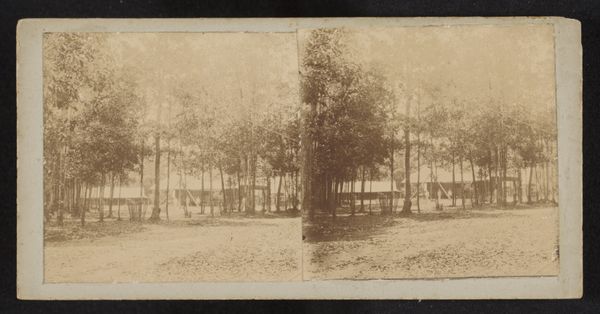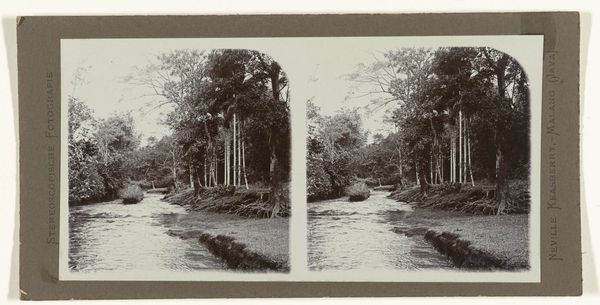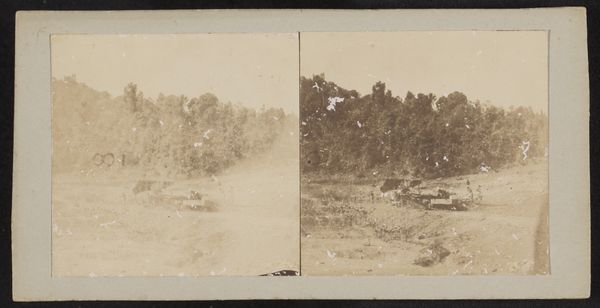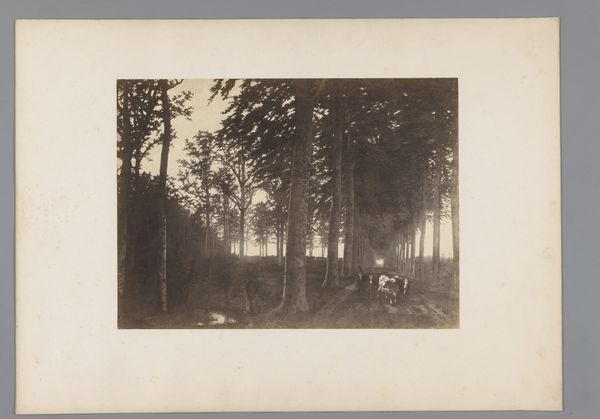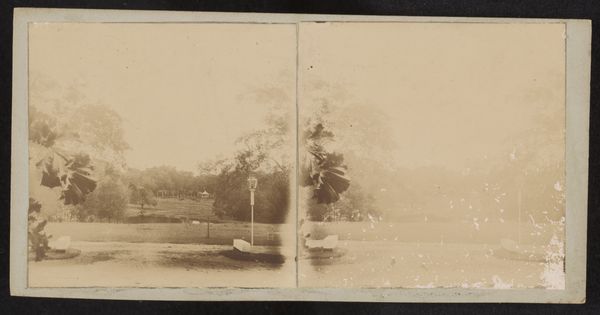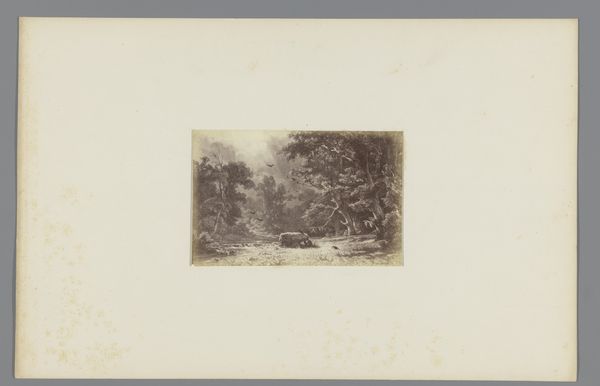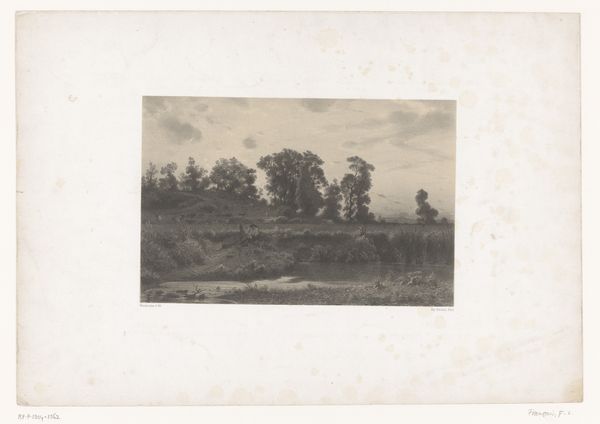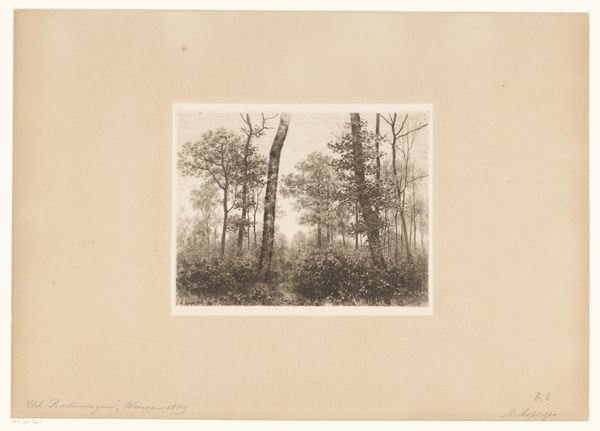
photography, gelatin-silver-print
#
pictorialism
#
landscape
#
photography
#
gelatin-silver-print
#
realism
Dimensions: height 80 mm, width 80 mm, height 88 mm, width 178 mm
Copyright: Rijks Museum: Open Domain
Curator: My first thought: hazy, ethereal. It’s as if the photographer wanted to capture not just a road, but a memory of a road. Editor: That's a lovely sentiment. This gelatin silver print, entitled "Weg naar Muntok" ("Road to Muntok"), was created sometime between 1900 and 1922 by Robert Julius Boers. Immediately, what strikes me is the stark, almost clinical realism combined with the soft focus typical of pictorialism. The image feels suspended in time. But, beyond the immediate aesthetics, we have to consider the historical and socio-political dimensions… Curator: Oh, please elaborate. What did roads mean in that period, in that location? Editor: Muntok is located on Bangka Island, then part of the Dutch East Indies, an area exploited for tin mining. Roads like this weren't neutral spaces. They were arteries of colonial extraction, pathways for transporting resources and asserting power. Boers, as a photographer working within that colonial context, wasn't merely capturing a landscape; he was documenting the infrastructure of empire, whether consciously or unconsciously. Curator: The softness of the image almost seems to deliberately blur any sense of that history. Editor: Yes, that tension between aesthetic beauty and historical context is crucial. We could look at it through a postcolonial lens and see how pictorialism, with its emphasis on beauty and atmosphere, aestheticizes the colonial landscape, obscuring the harsh realities of exploitation and oppression. Or is this artist maybe looking towards a peaceful, possibly fictional future? Curator: The photograph has this incredibly timeless feel. I almost see the start of a fairy tale! What would it be like to wander on that road, so long ago, toward something… something unknown, shimmering on the horizon… Editor: It’s funny you see it that way, because fairy tales have historically operated as both entertainment, and as instruction – even social indoctrination. Maybe, what the silver gelatin does here – between capturing a physical road and suggesting it’s about to evanesce into pure possibility - is to mirror the dual lives that roads and travel and photography played in society at the time. Curator: Thinking of all this history... maybe it does feel as if the sun's glare hides a troubled truth, obscured but definitely felt. Editor: Precisely. And remembering the troubled history of this road is also part of seeing the artwork.
Comments
No comments
Be the first to comment and join the conversation on the ultimate creative platform.
